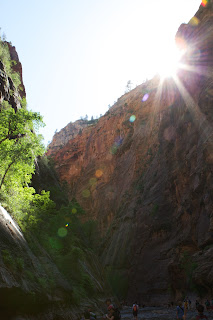Introductions: Notes and Goals
In the kind of essays we are writing in this course, your introductions must offer the following:
THESIS: a succinct statement of the central claim that the rest of the essay will explain/expand upon.
CONTEXT: a brief statement of the information that your reader needs to understand in order for your thesis to make sense. The context should include the following:
A preliminary statement or implication of the STAKES inherent in your argument/issue. In other words, WHY should the reader care about this topic? What will it cost her not to understand your argument?
An indication of the state of play of the conversation about the topic of your thesis, i.e. the conventional wisdom, the conventional ignorance, or the most salient elements of the ongoing dispute.
If at all possible, your introduction should also include a HOOK, an opening sentence or two that startles or charms your reader into reading further.
You may also want to include a ROAD MAP in or near your introduction. This series of claims will lay out HOW you will be proving your argument. This often includes a terse statement of your primary supportive claims and especially the LOGIC of their organization.
EXAMPLE:
Stephanie Solis did not know that she was an illegal immigrant until she was eighteen. Until then, her parents had been able to hide the fact that they had broken the law when they brought their infant daughter to the United States. Solis’ discovery of her illegal status may be unusual, but her predicament is not. This year alone about 70,000 undocumented students will graduate from American high schools. Immigration excites powerful emotions on both sides of the debate; livelihoods, ways of life, and lives all seem to be at stake. However, the very importance of the topic tends to lead people to get emotionally attached to their positions and to avoid confronting the complexities of the issue. For example, the immigration debate in this country tends to focus on adult immigrants; it often fails to account for the millions of children brought into the country by their parents. It is true that these children’s very presence in this country is a crime. However, many, if not most of the children illegally in the United States came here when they were too young to have deliberately done anything wrong. Many people oppose “rewarding” adult immigrants by giving their children citizenship. But like it or not, those millions of children are already here and something must be done to allow them to become fully productive residents. Therefore, for both moral and practical reasons, Congress must pass a law creating a pathway to citizenship for all people brought to the United States before they turned eighteen.
(h/t J. Enfield)








































